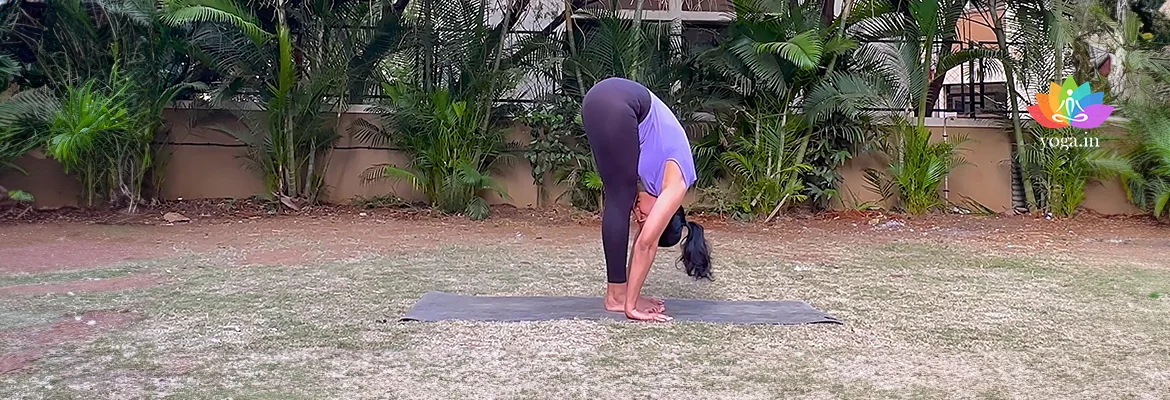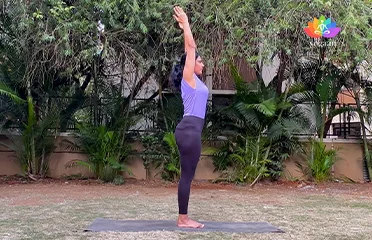Stand straight with feet together.
Introduction to the Asana
The sanskrit name is derived from hasta (हस्त) means hands, pada (पदा) means foot and asana (आसन) meaning posture or seat.
Step to get in the pose
-
-
Breathing in, extend your arms overhead.
-
Breathing out, bend forward and down towards the feet.
-
Stay in the posture for 20-30 seconds and continue to breathe deeply.
-
Keep the legs and spine erect; hands must rest either on the floor beside the feet or on the legs.
-
Slowly exhale, moving the chest towards the knees.
-
Lift the hips and tailbone higher; press the heels down.
-
Relax the head, move it gently towards the feet, and keep breathing deeply.
-
Breathing in, stretch your arms forward and up and slowly come up to the standing position.
-
Then breathing out, bring the arms to the sides.
Common mistakes and pitfalls
-
Putting pressure on the lower back.
Benefits
-
Tones the abdominal organs.
-
Cleans the large intestine.
-
Aids digestion and relieves gastric troubles.
-
Enhances flexibility in your spine, hamstrings, and calf muscles.
-
Energizes the brain.
-
Calms the mind, reducing stress and anxiety.
Contraindication
-
Avoid in case of lower back injuries, spondylitis, cervical pain and spinal problems.




